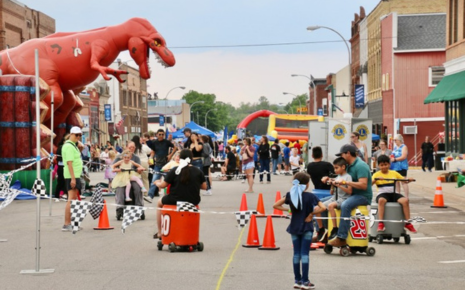Upgraded Wastewater Treatment Plant Fully Online
Wednesday, June 30, 2021
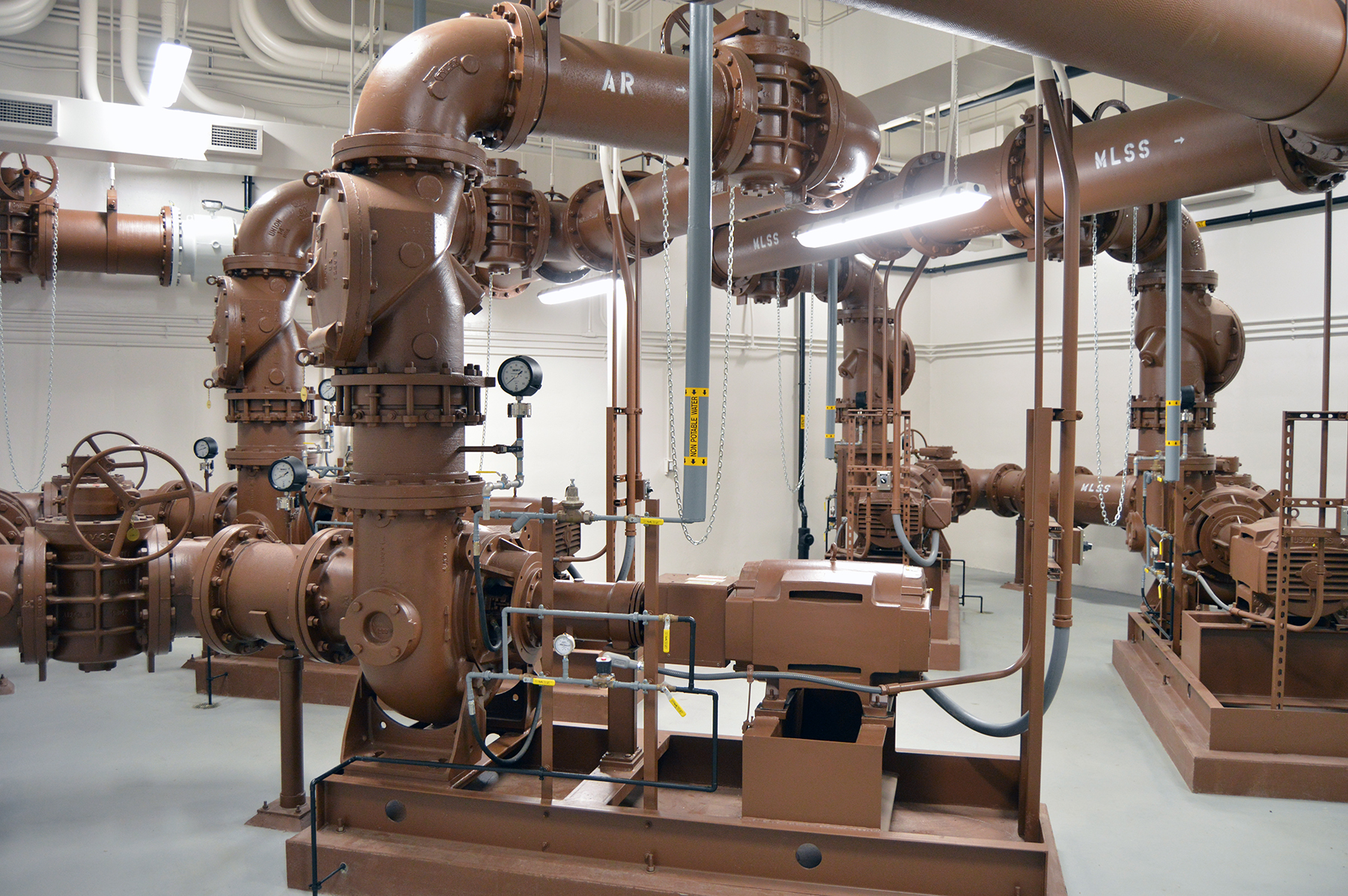
The Wastewater Treatment Plant
As a small-town mecca for big-time industry, Long Prairie faces some unique challenges that most towns of its size never worry about; how to handle a larger than average amount of waste water. The newly completed addition to the town’s wastewater treatment plant is the second phase of expansion that began in 2002 to handle the large volume of industrial and residential waste within the system before it enters the Long Prairie River.
As a designated Class-A major facility, the Long Prairie wastewater treatment plant has an average wet weather flow of 2.5 million gallons of water daily, explains Public Works Director Chad Bosl, who holds the operator’s license issued by the state for the wastewater treatment facility. The plant is designed to treat residential flows combined with waste from four major food industry plants. The 2020 wastewater treatment facility expansion falls in line with the growth of these local employers, all of whom invested capital into the project.
Planning for addition to the mechanical wastewater treatment facility began in 2016, says City Administrator Ted Gray. City officials met with representatives from the major industries to determine the amount of capital each would need to invest, based on their expected yearly capacity and the types of treatment needed, to help pay for the expansion. “We took a bond out for $11.5 million (paid by the industry),” says Gray. In addition to paying a base charge, the industries also pay certain things “like TKN, phosphorus, TSS, and CBOD, which are solids that we have to spend money on to treat.”
The city also received a $2.5 million dollar grant from the federal EDA that helped pay for the project,” adds Gray, in an overview of the financing of the $14 million addition, along with a slight rate increase passed on to residents for water and sewer, which Gray admits caused some pushback from the community.
The bulk of the project consisted of construction of a new building, replete with all the plumbing, electrical, and monitoring stations for the plant’s anoxic and aeration basins. The original stabilization and treatment pond system was built between 1956 and 1989. (Several of the ponds are now owned and operated by the industries who use them as settlement ponds prior to their waste water entering the treatment plant). The 2001 project built the existing mechanical plant and the most recent project expanded and replaced necessary equipment.
Three new aeration basins were built while the existing aeration basins were converted to anoxic basins The aeration basins encompass an area the size of half a football field, says city administrator Gray. When it came to pouring the concrete for the 20-foot-deep basins, Worms Lumber and Ready Mix dedicated many hours of their Long Prairie cement plant for the project The base slab had to be divided into two pours totaling 1,090 cubic yards of concrete. The second half poured 650 cubic yards one day in October 2019.
“By having this facility, it creates job growth to allow the community to stay alive,” says Gray, who speaks candidly about Long Prairie’s prospects without the packing industries. “If we didn't have some of these industries, we wouldn't have much of a community left.” The investment by the city and the industries to upgrade the wastewater treatment plant helps the long-term economic viability for Long Prairie. “Treating wastewater is a difficult thing, and we have the ability to do it in a very efficient way. We have to grow to meet the needs of the community, and then also to make sure that we're also environmentally conscious as well.”
The Wastewater Treatment Process
Using industry vernacular, the Long Prairie Wastewater Treatment plant uses an “Extended Aeration Activated Sludge Process,” to treat its water. “Activated sludge consists of sludge particles, teeming with living organisms, produced in either raw or settled wastewater by the growth of organisms (which include bacteria) in aeration tanks where dissolved oxygen is present,” according to the Bureau of Safe Drinking Water, Department of Environmental Protection Wastewater Treatment Plant Operator Training.
The Activated Sludge Process is one of several biological wastewater treatment alternatives in Secondary Treatment. When Activated Sludge is added to wastewater, the organisms in this mixed liquor quickly decompose the wastes in the wastewater being treated. After a required period of aeration and agitation in the aeration tank, the mixed liquor usually flows to a separate tank called a clarifier where the activated sludge is allowed to settle out and the remaining liquid is discharged as effluent. The settled sludge is either disposed of as waste activated sludge or reused in the aeration tank as return activated sludge. Some sludge must always be returned to the aeration tanks to maintain an adequate population of organisms.
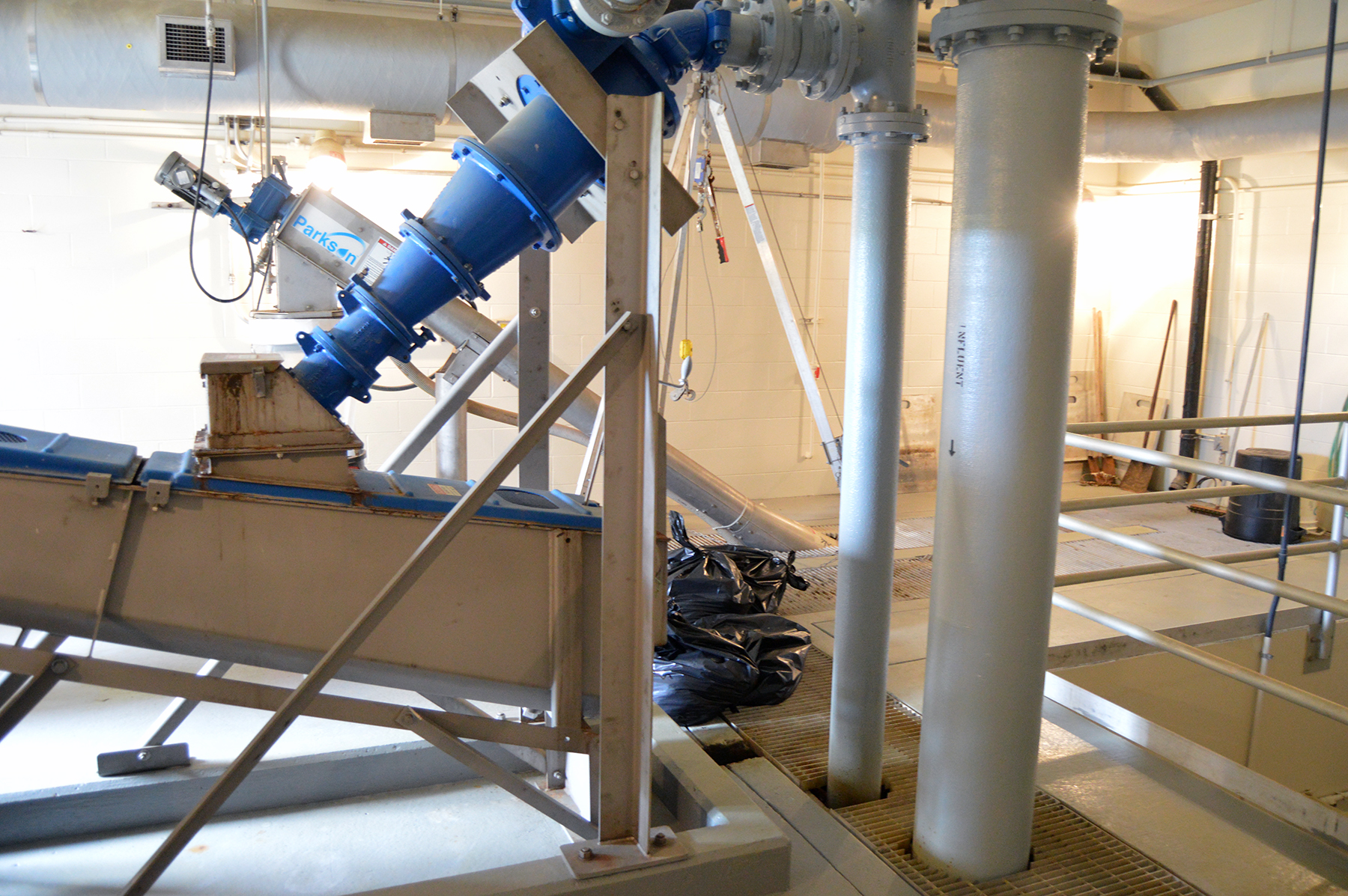 All the waste water from Long Prairie, both industrial and municipal, flows into the plant at the same location, entering a fine screener that removes anything that doesn’t dissolve in the water; things like candy wrapper and yes, those “flushable” wipes that clog up the system. Flushable wipes are public enemy number one for any plumber, sewer cleaner, or treatment plant, says plant manager Chad Bosl “They're a terrible thing. We remove a lot of flushable wipes.” Beyond that, sand and grit are removed from the at this stage before the water enters a series of anoxic and aeration basins and water clarification tanks prior to entering a chlorine contact chamber before being discharged into the Long Prairie River.
All the waste water from Long Prairie, both industrial and municipal, flows into the plant at the same location, entering a fine screener that removes anything that doesn’t dissolve in the water; things like candy wrapper and yes, those “flushable” wipes that clog up the system. Flushable wipes are public enemy number one for any plumber, sewer cleaner, or treatment plant, says plant manager Chad Bosl “They're a terrible thing. We remove a lot of flushable wipes.” Beyond that, sand and grit are removed from the at this stage before the water enters a series of anoxic and aeration basins and water clarification tanks prior to entering a chlorine contact chamber before being discharged into the Long Prairie River.
From the screening station the water goes to the plant’s “anoxic” basins. The plant’s 2002 configuration consisted of one anaerobic basin, and small anoxic basin and four aeration basins, which now serve as anoxic basins. It's a basin that has mixers in it, so nothing settles out, but there's virtually no dissolved oxygen in there. The suspended solids allow for the bacterial breakdown of nitrate.
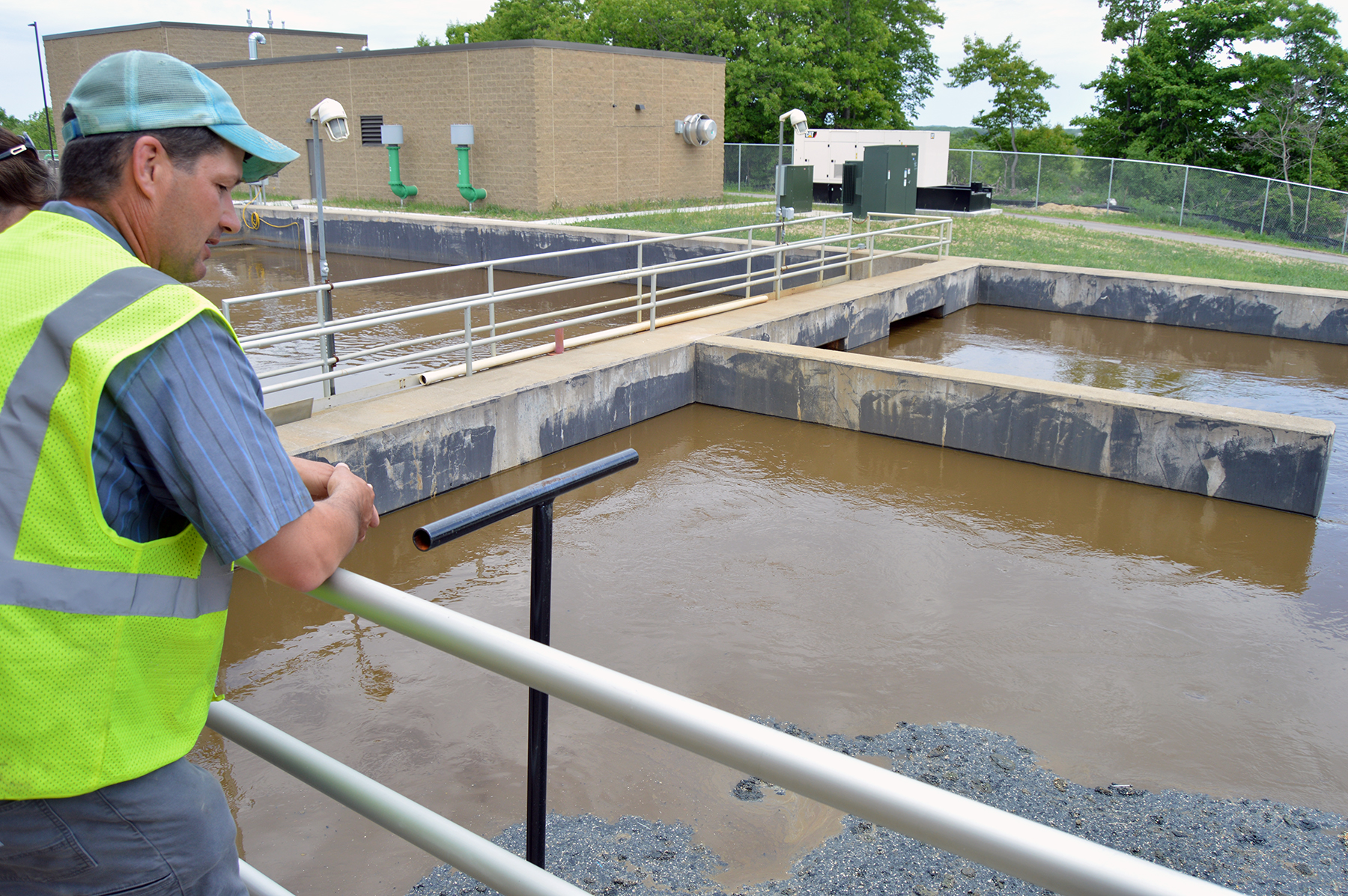 As the water cycles through the anoxic tanks, it is transferred to plant’s new aeration basins where the water is biologically treated with living microorganisms that feed on the waste. It benefits in biological phosphorus and ammonia removal. As the microorganisms feed and grow, breaking down the bacteria in a matter of hours.
As the water cycles through the anoxic tanks, it is transferred to plant’s new aeration basins where the water is biologically treated with living microorganisms that feed on the waste. It benefits in biological phosphorus and ammonia removal. As the microorganisms feed and grow, breaking down the bacteria in a matter of hours.
The organisms need a balance of oxygen (provided by the aerators) and food to be effective.
For the activated sludge process to work properly, Bosl and his team control the number of organisms and the dissolved oxygen level in the aeration tank by returning or wasting the activated sludge out of the clarifiers.
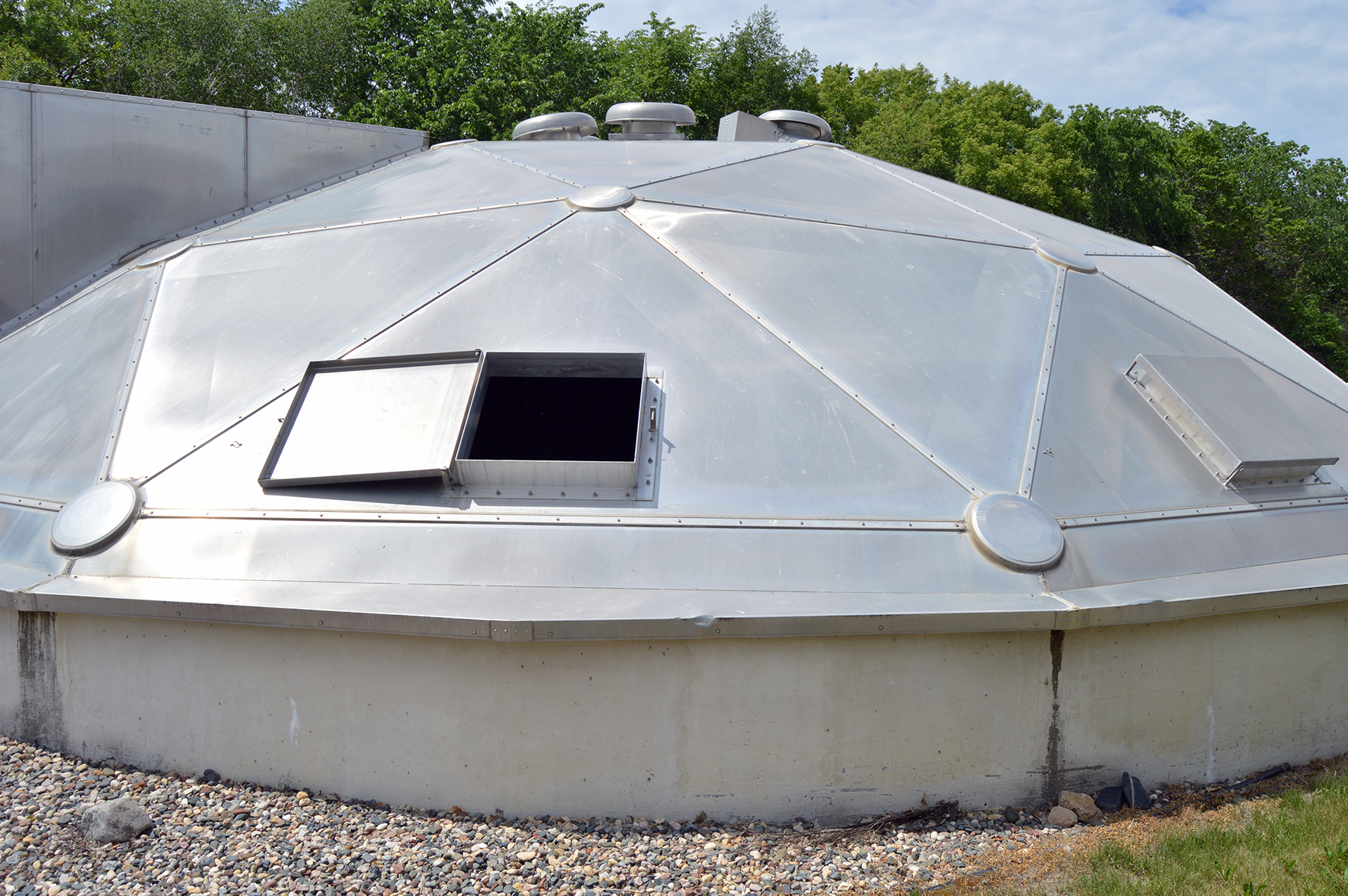 In the final stages of the water treatment, the microorganisms are removed in the clarification process where the sludge settles to the bottom of a circular tank and the clean water flows over weirs. The clean water goes to the chlorine contact tanks to remove any remaining bacteria or organisms. Excess chlorine is removed with sulfur dioxide in the final step before the water is release into the Long Prairie River
In the final stages of the water treatment, the microorganisms are removed in the clarification process where the sludge settles to the bottom of a circular tank and the clean water flows over weirs. The clean water goes to the chlorine contact tanks to remove any remaining bacteria or organisms. Excess chlorine is removed with sulfur dioxide in the final step before the water is release into the Long Prairie River
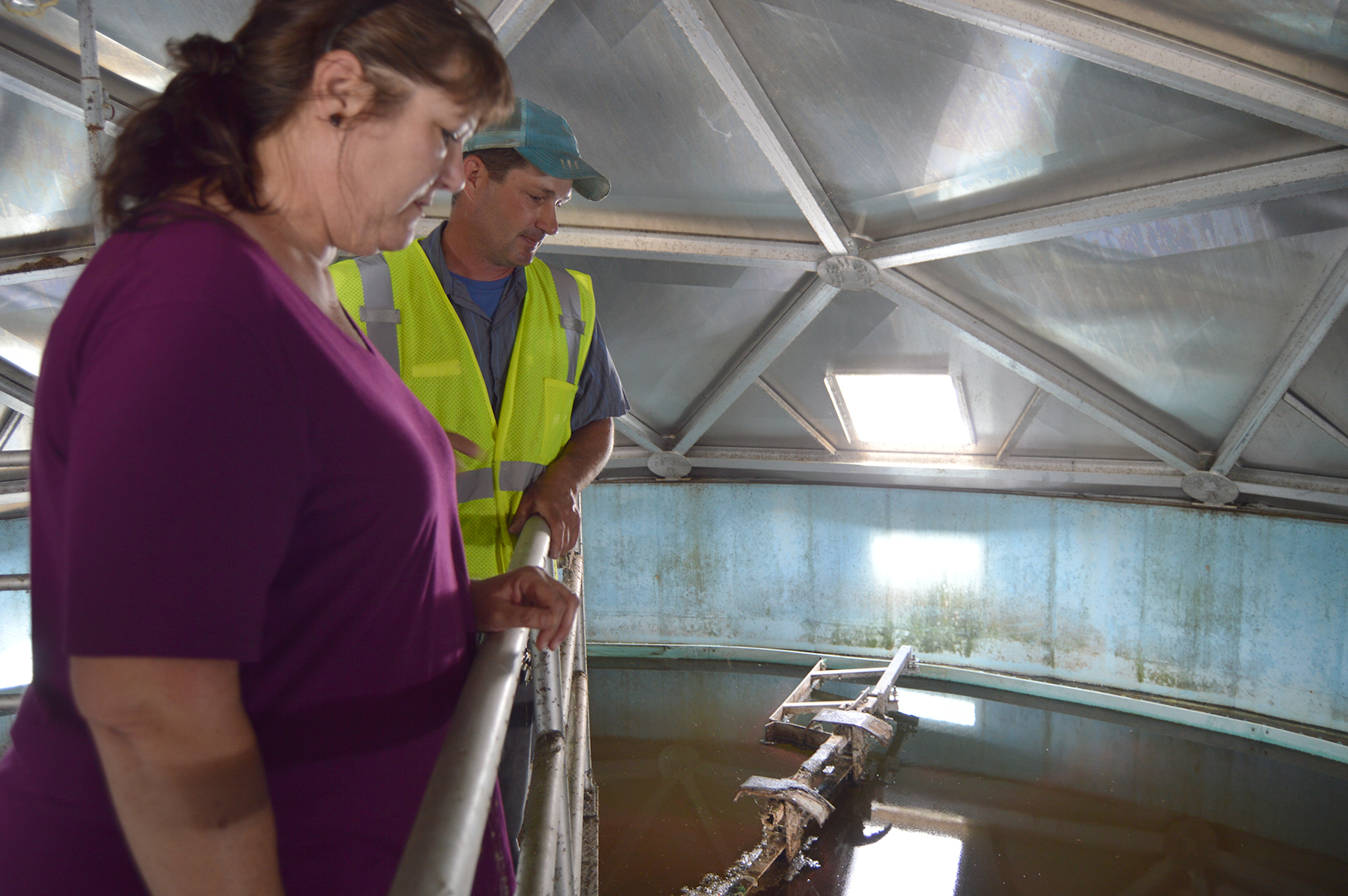 Because of its use of the biological process, one of the areas of concern for the city is the amount of chloride (salt) discharged. As a natural element, chlorides are difficult to break down in the type of treatment plant that Long Prairie has in place. Bosl explains that most of the salt comes from water softener systems, but notes that salt is also heavily used by the meat processing industries. “If industries keep growing and that chloride is trickling up within our sampling that we send out, from the flow that goes out, it could trigger another expansion,” says Bosl.
Because of its use of the biological process, one of the areas of concern for the city is the amount of chloride (salt) discharged. As a natural element, chlorides are difficult to break down in the type of treatment plant that Long Prairie has in place. Bosl explains that most of the salt comes from water softener systems, but notes that salt is also heavily used by the meat processing industries. “If industries keep growing and that chloride is trickling up within our sampling that we send out, from the flow that goes out, it could trigger another expansion,” says Bosl.
Category: News


